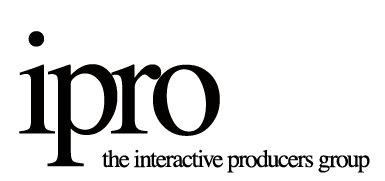
Q: Introduce us to yourself and your company.
Ahoy. I'm Andrew Covell - the lead project manager at Ted Perez + Associates, a digital agency situated in Venice, CA. We execute design, development, strategy and combat missions with our clients in the film and advertising industries. [www.tedperez.com]
Q: Interactive Producers come from all walks of life, they are a hybrid of talents, tell us about your background and how you got interested in digital production?
My first love of digital media came in middle school [c. 1995] when I discovered the joys [and consequences] of distributing photos of my teachers with Photoshopped mohawks and beards. I think I only got in trouble once, so it was totally worth it.
I matured slightly and went on to study digital media and advertising at Michigan State University. From there I've worked a brief stint as a cartoonist, in video production, print production and mobile phone content production [ringtones, etc]. Now I'm at Ted Perez + Associates as an interactive producer also involved in strategy, copywriting and business development.
Q: How do you stay on top of emerging technologies and keep your team informed and motivated?
My preferred method of discovery has been cruising the tech blogs for new ideas and technologies to discuss with friends and co-workers. I suppose some day I'll become crotchety and stop wanting to learn new things ... and that'll be the day I run off and become something like a chimney sweep or circus bear trainer.
Q: What does your ideal client/project look like?
A client earns a gold star if they have clear objectives, reasonable schedule/budget and the grit to be bold. [A good sense of humor is always extra credit].
Q: How do you educate your clients and set realistic expectations for a project?
Having proper scope and documentation [statement of work, wire frames and site maps, etc.] is key. It's a lot of heavy lifting at the start of the project, but it's the best way to make certain the vision is clear and understood by all parties. Without, the project becomes a moving target that will likely implode two to three weeks into development.
Q: What was the best project you have ever worked on?
My favorite project was an interactive installation we built in Q309 for Sprint's NOW campaign in San Francisco and NYC [Agency - Goodby, Silverstein & Partners]. We designed and programmed large street level displays that interacted with people as they walked past using infrared motion detection. It was a great concept and was unlike any other project we've worked on before. To say it was a challenge is an understatement, but it was an incredible experience. More info: http://www.echoesofburmajones.com/2010/01/12/96/sprint_interactive_now_installation.htm
Q: How many projects are you comfortable producing at one given time?
Projects vary in scale, intensity and maintenance. The workload also depends on the stage of production. To give an answer, I'd say 3-5. Too few projects can be just as bad as too many - which speaks to the quote: "If you want something done, ask a busy person to do it."
Q: What tools do you use to help you better organize your projects?
The Adobe suite, iTask, Excel and a bit of gumption are all I need to paint the wagon.
Q: What does your dream production team look like?
My ideal team consists of talented people who are eager to take ownership of their work and create something special. I'm pretty lucky to work with the team I have at Ted Perez. They rule. They're extremely talented and share a genuine enthusiasm for the work and have the initiative to contribute to the project beyond their primary responsibilities.
Q: How do you ensure that your client's best interests are met?
I try to make my clients' jobs as simple as possible by being reliable, anticipating their needs, actively listening and staying on schedule. Execution-wise, it's important to constantly look for ways to improve the project and take it beyond the initial vision. Sometimes the effort doesn't pay off and we may need to take a step back, but the ambition rarely goes unappreciated. To not make the extra effort is to be a mindless sweatshop.
Q: What is your vision of what the next phase of our industry is going to look like?
It will be interesting as more people begin using mobile devices as their primary [or at least, most used] web platform. The iPad isn't there yet, but it's a peek at where we'll be in a few years. Technology is constantly evolving. It's fun to think that four years ago having a phone with constant access to the web seemed frivolous. Now constant connectivity is a near necessity. A challenge for our industry will be managing the multitude of platforms that will exist. Versioning a site or application for 15+ unique devices will be a nightmare if we don't approach with some semblance of standardization.
Q: Please share a snippet of wisdom that you would like to impart on our readers.
I have yet to scratch the surface of wisdom in my lifetime. With this admission, I'll allow Mr. Melville [not pictured] to share his consideration on my behalf: "[…] perhaps, life holds thee; not thou it."


